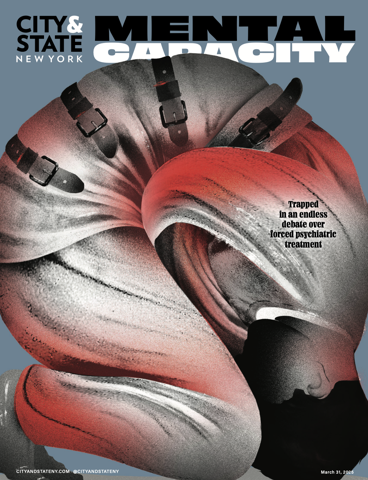
Interviews & Profiles
Fighting to make the richest NY companies and people fund the basic needs of everyone else
An interview with Mike Kink, executive director of Strong Economy for All
Nonprofits
Why nonprofits could use more lawyers on their boards
As organizations face increasing hurdles and regulatory pressures, having an attorney as a board member can add a layer of protection to allocate more resources towards a nonprofit’s mission.
Opinion
Opinion: Putting NYC youth in foster care on a path to success with permanent housing
How a new partnership is transforming the process of securing a home for these young adults.
Nonprofits
NYPD, FDNY and DSNY take on New York Road Runners Half Marathon
Members of the city agencies, among others and the Metropolitan Transportation Authority, were to race each other for the third year in the Commissioner’s Cup.
Opinion
Opinion: Babies’ health hangs in the balance this budget season
A call for a dedicated funding stream that ensures New York’s young children and families have access to preventative supports and services they need.
Personality
A soon-to-be nonprofit exec responds when ‘God had bigger plans’
An interview with Sherry Tucker, CEO of WellLife Network.
Nonprofits
How NY nonprofits are regrouping under Trump’s attacks
Experts discussed best practices, management and DEI at New York Nonprofit Media’s 2025 BoardCon.
Opinion
Opinion: Building the life sciences hub of the future
Turning Hunter College’s Brookdale Campus into the Science Park and Research Campus (SPARC) Kips Bay.
Education
Opinion: Why “Crew” should be expanded in NYC schools
This advisory and community-building model is helping to foster school and student success.
Opinion
Opinion: Nonprofits must prepare for De Tocqueville’s last stand
A look at how the Trump administration is an existential threat to the entire sector.
Nonprofits
Opinion: Crime, punishment and the power of storytelling (or beyond retribution)
A case for restorative practices in media.
Nonprofits
Serving immigrant, refugee and marginalized communities during Trump 2.0
An interview with Arab American Family Support Center’s Interim Executive Director Mark Foggin.
MagazineShow All
Nonprofits
Advocating for workers in the construction industry
An interview with Elizabeth Crowley, president of the Building Trades Employers’ Association
Nonprofits
Adams administration cracks down on late payments to nonprofits
The mayor will make an executive order to create better communication channels between government and providers.
Nonprofits
Advancing a long career in child welfare to the next level
An interview with Jennifer March as she joins the New York Foundling.
Nonprofits
School-based nonprofit program loses $5.1 million grant
A contract termination has left the fate of I’Raise Girls & Boys International Corporation uncertain.
Nonprofits
Paving paths to green jobs with HOPE
The 40-year old workforce development nonprofit unveils a new strategic plan centered on careers in the green economy.
Nonprofits
Opinion: Orthodox Jewish voters are not monolithic
Here’s what politicians need to know about a growing demographic that takes elections and politics very seriously.
Nonprofits
From veteran to nonprofit housing leader
Jamal C. Robinson weaves his military experience as executive director of IMPACCT Brooklyn, a 60-year old nonprofit affordable housing developer.
Nonprofits










































